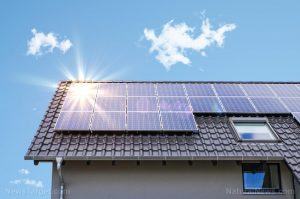
Emergency pump
If you have the skills and patience, you can build the simplest type of pump: A pitcher hand pump. This type of pump uses suction to draw water up. While it's easy to build a pitcher hand pump on a limited budget, this type of pump works best when used on shallow wells. If you have a deeper well, you need a vacuum pump. However, a vacuum pump is slightly more complicated and expensive to build. If you're interested in building either a pitcher hand pump or a vacuum pump, search online for tutorials, a list of materials and step-by-step instructions on how to build the pumps.Hand pump
A hand pump is one of the best ways to get water from a well without electricity. You can also get a hand pump if you have an electrical submersible pump so you can easily switch between the two methods. Hand pumps are best for shallow wells and you can use one to draw water from a depth of 25 feet or less. If you're accessing water over 30 feet down, you will need more muscle power. If you have a deep well hand pump, you can link it to a windmill or operate it using a foot valve. Deep well hand pumps are more expensive, but they'll make your job easier if you're drawing water up from depths of 300 feet. Use a hand pump if you prefer a method that only requires muscle power and can be used in all weather conditions.Generator
A backup generator is a great option for a reliable power source when SHTF and you're facing grid problems or extreme weather conditions. Note that a dual fuel generator can provide the most cost-effective solution, but not all dual fuel generators can produce the voltage you need for a deep well pump to operate. When using a deep well pump, get a diesel generator that's both portable and powerful enough to produce the pump’s required 220v.High lifter or hydraulic ram (hydram) pump
Depending on the terrain, you can use either a hydraulic ram pump or a high lifter to draw well water. Both pumps use downhill water pressure to push the water up to a higher point than the water source. Gravity-fed water systems are easy to install and maintain. However, they're only suitable if you have a continuous supply of water and space for a pump at least a foot and a half below that source. (Related: Prepping 101: How to store water for emergency preparedness.) Hydraulic ram pumps need a higher flow rate and can be rather noisy. On the other hand, high lifters can draw as little as one gallon per minute and are much quieter to operate. Both pumps are self-powered and they don’t require any fuel, solar power, or electricity.
Solar pump
With a high-quality solar well pump, you can pump water from depths of 600 feet or more. Use a surface solar pump if you have a shallow well and you're only moving water from your storage tank to your home. If you have a deeper well, get a submersible solar pump. Some submersible solar pumps can run off of batteries or sunlight, making them a great option if you need to access water during extreme weather conditions or during a power outage. If you have the funds to do so, invest in at least two methods to draw water from your well. This ensures that you're not solely reliant on one type of pump.Well or sleeve bucket
A well or sleeve bucket is a great option for preppers on a tight budget. Well buckets, also called bullet, cylinder, or torpedo buckets, are skinny buckets that you can lower into the narrow confines of a well casing to draw water to the surface. You can buy one or make your own well bucket. If you're choosing the DIY version, you can make a well bucket using supplies like rope and PVC piping. While a homemade well bucket isn't as voluminous as a store-bought model, it's just as effective. Supplies:- (1) 2-foot section of 1 1/2-inch PVC pipe (sch 40)
- (1) 2-foot section of 2-inch PVC pipe (sch 40)
- (1) 2 inches x 1.5 inches PVC Coupling
- (1) 3/4-inch Spring-loaded one-way coupler (You need to pull the spring out)
- (1) 1 1/2-inch Threaded cap (sch 40)
- (1) 3/4-inch Male adapter CPVC
- (1) 1/4-inch Hex nut
- (1) 1/4-inch Hex nut bolt, 3 inches long
- PVC Primer and Glue
- 100 feet of rope (Or enough to reach into your well with about 10 feet leftover)
- Drill a hole in the cap large enough to fit the 3/4-inch male adapter through.
- Use a knife to fine-tune the hole. Clean it up and enlarge it if necessary.
- Fit the male adapter through the hole. You can also add a metal washer prior.
- Remove the spring from the one-way coupler. You don't want it to stay open because it has to close from the water pressure when you pull the well bucket up.
- On the top of the 2-inch pipe, drill two holes directly opposite one another to insert the bolt. This is where you will tie the rope to raise and lower the bucket.
- Dry fit the parts and cut the 2-inch pipe to your preferred bucket length.
- Use primer and glue to secure the PVC parts together. Press the parts tightly for a minute to allow the glue to set without pushing the pipes apart.
- Insert the bolt and secure the rope to the bolt.
- Let the glue cure for two hours, after which the well bucket is ready to use.
Wind-powered pump
A wind turbine will depend on the weather, but you can use it to pump water to a holding tank that will then be transported to your home by gravity using a hydraulic ram or high lifter system. Alternatively, you can hook up a wind turbine to solar panels so you have two alternative power sources when SHTF. While a wind-powered pump requires an investment of several hundred dollars, you're getting a reliable power source that costs very little to run and maintain. With alternative energy sources like wind or solar power, you can draw water from your well even if the grid goes down. However, severe weather conditions like heavy rain or gale-force winds can disrupt your electricity supply and alternative sources. This may cut off your water supply. If you want a reliable and sustainable way of getting water from your well that uses gravity or manpower, choose a hydraulic ram system or a hand pump to draw water without electricity. Sources include: PrimalSurvivor.net TinyHouseHomestead.comDISCOVERY: Luminescent “windows” could transform light into power
By Divina Ramirez // Share
Homesteading hacks: 3 Non-toxic dishwasher rinse aid recipes
By Virgilio Marin // Share
Prepping 101: What to do with frozen food during a power outage
By Zoey Sky // Share
Natural healing: Survival uses for coconut oil
By Zoey Sky // Share
There are five levels of preppers… which one are you?
By Nolan Barton // Share
Mexico City sinking at “unstoppable rate” of up to 20 inches a year, study finds
By Virgilio Marin // Share
California fog traps pollution, sparking health concerns
By willowt // Share
Syrian migrant threatens nightclub in Germany with AK-47 after being turned away
By ramontomeydw // Share
Climate science under scrutiny: Study challenges validity of global temperature metrics
By bellecarter // Share
The censorship of mask science: How evidence against mask efficacy is being purged
By patricklewis // Share
Study: Sugary drinks cause more Type 2 diabetes than sugary foods
By avagrace // Share











